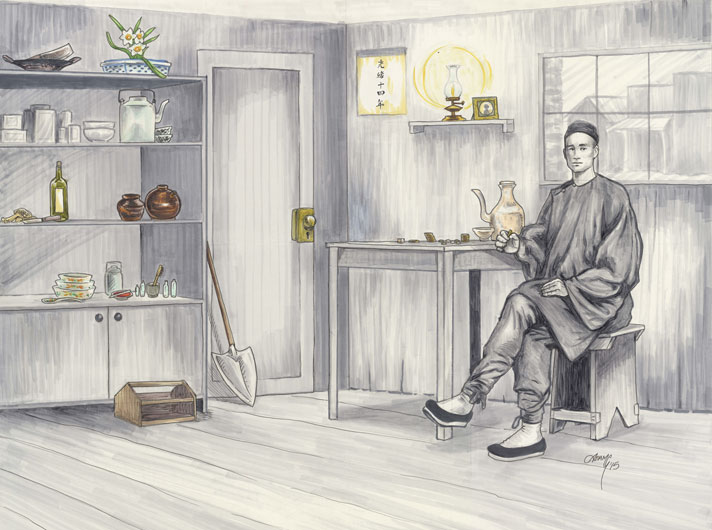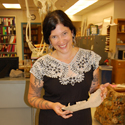Digging Jacksonville – Dec 2015/Jan 2016
For more than a year the Southern Oregon University Laboratory of Anthropology (SOULA) staff, students, and community volunteers have been using this column to highlight the importance of artifacts recovered from archaeological sites across Jacksonville. While it is relatively easy to show the importance of a single artifact, explaining how a large group of artifacts forge into something meaningful can be a little more difficult to do. A recent collaboration with the City of Jacksonville allowed us to use artifacts and other aspects of our archaeological work in new and exciting ways.
The city created a new interpretive panel for the Brunner Plaza on the corner of Oregon and Main streets, which marks the entrance to the historical Chinese Quarter. The panel gives general information about the site, and has provided an opportunity to for us to share some of the recent discoveries from our excavations within a Chinese dwelling that burned to the ground in the fall of 1888. Former city employee Celeste Dyson led the panel project, and had the insight to have an illustrator visually translate the archaeological findings. Artist Adam Bunch did a great job wading through the piles of historical documents and information from the excavation in order to create an image of what the house might have looked like before the fire.
Adam used historical photographs to reference the individual pictured and the general feel of the room. Archaeological evidence was used to show the layout of the house, structural features (such as the position of the door), and to suggest what furniture items might have been within it. Almost every detail in the picture represents actual findings from our excavations. The scene out the window is also from an historical photograph taken at roughly the same vantage point as the original building.
Adam’s thoughtful portrayal of the house and its contents allows the viewer to see a simplified version of what the building might have looked like inside. The process of imagining how our artifacts and other aspects of the excavation fit together has helped us transform a pile of burned rubble back into the household it once was. Work on the project is ongoing, and we are continuing to learn more about the house, its inhabitants, and the many ways that the thousands of artifacts we recovered work together to tell the larger story about the site. Be sure to check out the new panel, and stay tuned to the Digging Jacksonville column so we can update you on new discoveries!
You can find out more about the artist Adam Bunch at his website: adambunch.wordpress.com or contact him at adambunch9@gmail.com.
The excavations at the Chinese Quarter Site were funded by the City of Jacksonville and the Oregon Department of Transportation. The interpretive panel was installed as part of this project.

 Chelsea Rose is an historical archaeologist who specializes in the settlement and development of the American West. Chelsea and the Southern Oregon University Laboratory of Anthropology (SOULA) conduct archaeology across Oregon and have done several projects in Jacksonville. You can reach Chelsea at rosec@sou.edu and follow SOULA on
Chelsea Rose is an historical archaeologist who specializes in the settlement and development of the American West. Chelsea and the Southern Oregon University Laboratory of Anthropology (SOULA) conduct archaeology across Oregon and have done several projects in Jacksonville. You can reach Chelsea at rosec@sou.edu and follow SOULA on